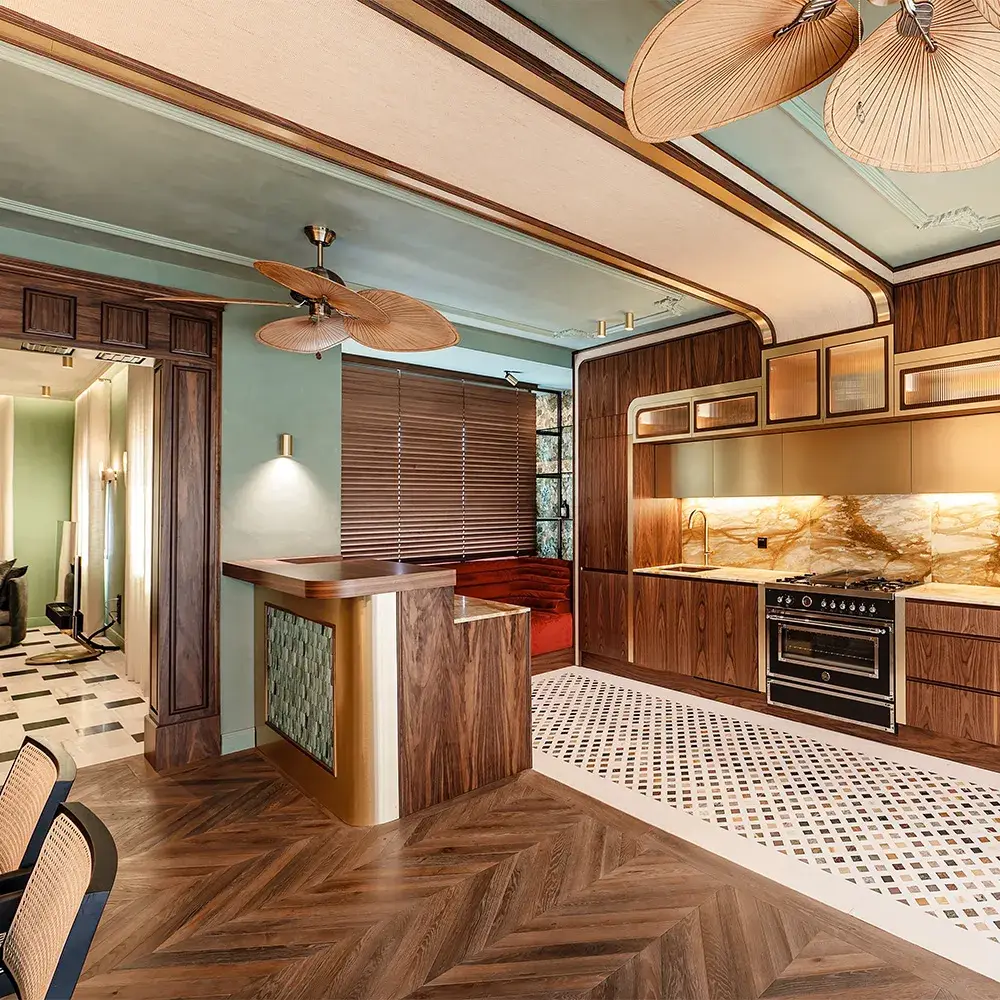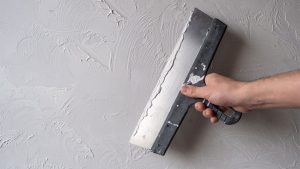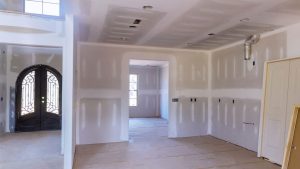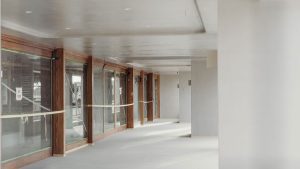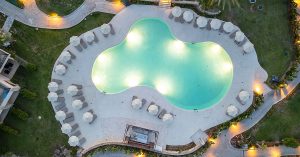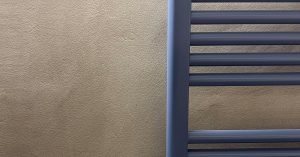¿Es el yeso de yeso el héroe olvidado de la construcción moderna? Este material versátil, una forma hidratada de sulfato cálcico, ha cambiado silenciosamente la industria de la construcción. Es ignífugo y ecológico, y ofrece muchas ventajas. Sin embargo, también tiene algunos inconvenientes. Analicemos el papel del yeso en la construcción.
Yesocon su fórmula química CaSO4-2H2O, es un elemento clave en la construcción. Destaca por su mezcla de agua, oxígeno, azufre y calcio. Veamos sus pros y sus contras para entender por qué es tan popular entre constructores y propietarios.
¿Sabía que el yeso de yeso puede durar más de 50 años con los cuidados adecuados? Su naturaleza de secado rápido y su respeto por el medio ambiente lo hacen atractivo para los proyectos modernos. Pero, ¿cómo se compara con otros materiales en cuanto a coste, durabilidad y rendimiento? Descubrámoslo.
Índice
Principales conclusiones
- El enyesado de yeso ofrece una resistencia al fuego y un aislamiento acústico superiores
- Es ecológico y se puede reciclar, a diferencia del enlucido de cemento
- El enyesado de yeso fragua más rápido, lo que agiliza la finalización del proyecto.
- Es ligero, lo que reduce la tensión estructural en los edificios
- El material proporciona un acabado liso ideal para pinturas de alta calidad
- El enyesado de yeso es rentable en cuanto a materiales y mano de obra
- Su caducidad se limita a 3-4 meses desde la fabricación
Comprender el enlucido de yeso: Propiedades y composición
El yeso ha sido un material de construcción clave durante siglos. Es conocido por su versatilidad y suele utilizarse en paredes y techos interiores. Veamos su composición, cómo se fabrica y los distintos tipos disponibles.
Composición química y formación natural
La roca de yeso es la base del enlucido de yeso. Es un mineral compuesto por sulfato cálcico dihidratado (CaSO4:2H2O). Se pueden encontrar yacimientos de yeso en todo el mundo, incluidos EE.UU., Rusia y Brasil.
La roca blanda, blanca o gris, se extrae de la superficie. Este proceso es esencial para fabricar yeso.
Proceso de fabricación
Para fabricar polvo de yeso seco, la roca de yeso se calienta para eliminar el agua. Esto crea una sustancia fina y pulverulenta. Cuando se mezcla con agua, se convierte en una pasta que se endurece rápidamente.
También se utiliza yeso sintético, un subproducto de procesos industriales. Esto hace que la producción de yeso sea más sostenible.
Tipos de yeso disponibles
Existen dos tipos principales de yeso:
- Yeso de anhidrita: Calentado a 1700°C durante la producción
- Yeso hemihidratado: Contiene aditivos como la perlita para mejorar la trabajabilidad
Ambos tipos tienen propiedades especiales como la resistencia al fuego y el aislamiento acústico. La elección entre yeso natural y yeso sintético depende de las necesidades del proyecto y del impacto medioambiental.
Importancia histórica y aplicaciones modernas
El yeso tiene una larga historia, que se remonta a más de 5.000 años. Los antiguos egipcios lo utilizaron en las pirámides, demostrando su resistencia y flexibilidad. Los romanos lo utilizaron después en templos y edificios públicos, consolidando su papel en la arquitectura.
Hoy en día, el yeso ha evolucionado hasta convertirse en placas de yeso y paredes de yeso. Estos cambios han acelerado enormemente la construcción. Los paredes de yeso, en particular, son ahora una parte importante del mercado mundial de la construcción, del que representan alrededor de 25%.
El yeso interior se utiliza ahora para algo más que las paredes. Las placas de yeso resistentes al fuego son cruciales para la seguridad en hogares y empresas. También pueden reducir el ruido hasta en 80%, perfectas para insonorizar.
Los productos de yeso también son buenos para el medio ambiente. Pueden reciclarse y a menudo incluyen materiales reciclados, por lo que encajan en normas de construcción ecológica como LEED. El yeso también ayuda a mantener frescos los edificios, lo que puede reducir el consumo de energía en 10-20%.
El enlucido de yeso también es clave en el diseño de oficinas modernas. Permite cambiar fácilmente la distribución de las oficinas, adaptándose a las necesidades de los espacios de trabajo actuales. Su larga historia y su naturaleza ecológica lo convierten en una parte vital de la construcción y el diseño.
Principales ventajas del uso de yeso en la construcción
El enlucido de yeso tiene muchas ventajas en la construcción. Es el favorito de constructores y propietarios. Veamos por qué destaca.
Propiedades superiores de resistencia al fuego
El yeso es muy resistente al fuego. Puede soportar temperaturas de hasta 537 °C (1000 °F) durante mucho tiempo. Esto ralentiza las llamas, hace que los edificios sean más seguros y da más tiempo a la gente para salir en caso de emergencia.
Aislamiento térmico y acústico
El enlucido de yeso también mantiene la temperatura constante y bloquea el sonido. Mantiene los edificios más frescos en verano y más calientes en invierno, ahorrando entre 20 y 30% en costes de calefacción y refrigeración. También reduce el ruido hasta 50%, haciendo que los espacios sean más silenciosos y confortables.
Rentabilidad y eficiencia laboral
El yeso es fácil de usar, lo que ahorra tiempo y dinero. Seca rápidamente, por lo que puede pintar en sólo 72 horas. A diferencia del enyesado de cemento, no necesita curado con agua, ahorrando una semana de trabajo. Su acabado liso significa que no necesita pasos adicionales, ahorrando 30% en tiempo y esfuerzo.
Sostenibilidad medioambiental
El yeso es bueno para el medio ambiente. Es reciclable y puede utilizarse muchas veces, siendo 90% reciclables. Su uso reduce los residuos de la construcción en 15-20% en comparación con los métodos antiguos. Su baja densidad también lo convierte en una opción ecológica para la construcción.
¿Cuáles son las desventajas del yeso?
El yeso tiene muchas ventajas, pero también algunos inconvenientes. Es una opción habitual para paredes interiores, pero hay cosas que hay que tener en cuenta antes de utilizarlo.
Sensibilidad a la humedad y daños causados por el agua
El enlucido de yeso no se lleva bien con la humedad. No es bueno para paredes exteriores o lugares con mucha humedad, como los cuartos de baño. Si se moja, puede debilitarse e incluso romperse.
Aplicaciones exteriores limitadas
Como es sensible a la humedad, el yeso es mejor para interiores. No es bueno para exteriores o lugares que se mojen a menudo. Esto lo hace menos útil en proyectos de construcción.
Almacenamiento y vida útil
El yeso dura entre 3 y 4 meses desde su fabricación. Si se almacena correctamente, puede durar hasta 6 meses. Sin embargo, dura menos que muchos otros materiales de construcción. Esto significa que puede desperdiciarse si no se utiliza rápidamente.
Retos de instalación
El yeso fragua rápido, lo cual es bueno y malo a la vez. Necesita personal cualificado para aplicarlo correctamente, porque se seca en sólo 25-30 minutos. Este fraguado rápido puede ser difícil de manejar para los principiantes.
| Aspecto | Yeso | Enlucido de cemento |
| Tiempo de ajuste | 25-30 minutos | 15 días |
| Resistencia al agua | Pobre | Bien |
| Uso exterior | No apto | Adecuado |
| Vida útil | 3-4 meses | 6-12 meses |
Técnicas de aplicación y buenas prácticas
Aplicar bien el enlucido de yeso requiere concentración y métodos conocidos. Esta guía le mostrará cómo conseguir un acabado liso y resultados duraderos.
Métodos de preparación de superficies
Asegúrese de que la superficie está limpia, seca y libre de polvo antes de aplicar el yeso. Quite la pintura suelta o el yeso viejo. Aplique una capa de imprimación y espere a que se seque por completo para que se adhiera mejor.
Instrucciones de mezcla y aplicación
Mezcle el yeso con agua en una proporción de 2:1. Mezclar bien durante 1-2 minutos para obtener la consistencia adecuada. Utilice agua a temperatura ambiente. Extienda el yeso uniformemente, manteniendo un grosor de 5-10 mm para paredes y de hasta 5 mm para techos.
Procesos de curado y acabado
Deje fraguar el enlucido de yeso durante 40-60 minutos después de aplicarlo. El curado con agua es clave; rocíe ligeramente la superficie cada 3-4 días durante 3-4 días. Utilice una llana o papel de lija para conseguir un acabado liso cuando esté semiseco. Tarda de 2 a 4 semanas en secarse completamente, dependiendo del grosor y del entorno.
| Método de aplicación | Tiempo de ajuste | Espesor máximo |
| Manual | 40-60 minutos | 5 cm (sin malla) |
| Máquina | 90 minutos | 5 cm (sin malla) |
Utilizando los métodos de aplicación adecuados, el enlucido de yeso puede durar más de 50 años. También ofrece un gran aislamiento acústico y resistencia al fuego.
Comparación del enlucido de yeso con las alternativas tradicionales
El enlucido de yeso tiene algunas grandes ventajas sobre los viejos favoritos como cemento y revoque de cal, aunque vale la pena considerar la durabilidad del enlucido de cal en determinadas aplicaciones. Se seca rápidamente, fraguando en 25-30 minutos y secándose en solo 3 días. Enlucido de cemento y arenatarda unos 21 días en secarse por completo.
Utilizar yeso es más rápido. Sólo se necesita una capa para un acabado liso, a diferencia de cemento que a menudo necesita más. Además, el yeso es más ligero, lo que significa menos tensión en los edificios. en comparación con enlucido de cemento.
Cemento Portland El yeso es conocido por su dureza y resistencia a la intemperie, por lo que es ideal para exteriores. Pero el yeso resiste mejor el fuego y mantiene frescos los edificios, lo que puede ahorrar costes de calefacción y refrigeración.
| Característica | Yeso | Enlucido de cemento |
| Tiempo de secado | 3 días | 21 días |
| Espesor de aplicación | 8-11 mm | 10 mm mínimo |
| Curado | No necesita curado | Curado en húmedo durante una semana |
| Resistencia a la humedad | Bajo | Alta |
| Impacto medioambiental | Menor huella de carbono | Mayores emisiones de CO₂ |
El yeso tiene muchas ventajas, pero cuesta más que el cemento para el mismo grosor. El cemento sigue siendo una opción económica para grandes proyectos, aunque se tarde más en instalarlo. La elección entre el yeso y los enlucidos tradicionales depende de lo que necesite para su proyecto, como la superficie, el presupuesto y el acabado que desee.
Mantenimiento y durabilidad
Las paredes enlucidas de yeso son muy duraderas si se cuidan. Pueden durar más de 50 años con los cuidados adecuados. En este artículo se explica cómo mantenerlas en buen estado durante mucho tiempo.
Requisitos de mantenimiento periódico
Mantener las paredes revocadas con yeso en perfecto estado es importante. Debe revisarlas a menudo para detectar grietas o daños causados por el agua. Utilice un paño suave y seco para limpiarlas sin dañar la superficie.
Problemas comunes y soluciones
El enlucido de yeso puede tener problemas. Los daños causados por el agua son importantes, sobre todo en baños y cocinas. Utilizar placas de yeso especiales en estas zonas ayuda mucho. En zonas de mucho uso, añadir malla de fibra de vidrio al enlucido lo hace más resistente.
Prolongar la vida útil del yeso
He aquí algunas maneras de hacer que su enlucido de yeso dure más tiempo:
- Aplique un buen sellador para mantener la humedad fuera
- Asegúrate de que haya una buena circulación de aire para evitar el moho
- Solucione enseguida los pequeños problemas para evitar otros mayores
- Elija pintura de calidad para proteger la superficie
| Factor | Impacto en la durabilidad | Consejo de mantenimiento |
| Exposición a la humedad | Alto riesgo de daños | Utilice variantes resistentes a la humedad en zonas húmedas |
| Resistencia a los impactos | Vulnerabilidad moderada | Refuerce las zonas de alto tránsito con malla |
| Fluctuaciones de temperatura | Bajo riesgo de agrietamiento | Garantizar un aislamiento adecuado |
| Calidad de la pintura | Afecta a la protección de la superficie | Utilice pintura transpirable de alta calidad |
Siguiendo estos consejos, puede hacer que sus paredes enlucidas de yeso duren mucho tiempo. De este modo, su hogar mantendrá un aspecto estupendo durante muchos años.
Normas del sector y control de calidad
La industria india de la construcción depende en gran medida del yeso de calidad. Garantiza que la resistencia del yeso cumpla normas estrictas. Estas normas abarcan desde el tiempo de fraguado hasta la resistencia al fuego.
En Estados Unidos, empresas como USG Corporation siguen las directrices de ASTM International. Esto garantiza que sus productos de yeso cumplan estrictos niveles de calidad.
El control de calidad es clave en la fabricación de yeso. Por seguridad, los fabricantes limitan el peso de los sacos a 25 kg. También se centran en unos altos niveles de pureza durante la producción.
La resistencia de la escayola se comprueba periódicamente para cumplir las normas del sector. Esta atención al detalle se extiende al control del tiempo de fraguado para obtener los mejores resultados.
La preocupación por el medio ambiente está cambiando el sector. Muchas empresas reciclan residuos de placas de yeso para la agricultura. Cumplen estrictas normas de vertido para reducir el daño medioambiental.
La seguridad es uno de los principales aspectos a la hora de utilizar yeso. Está clasificado como no peligroso, sin riesgos conocidos para la salud. Sus propiedades ignífugas aumentan la seguridad del edificio.
Siguiendo estas normas y medidas de calidad, la industria de la construcción mantiene el yeso fiable y seguro.
Alternativa al yeso: ¿Es Terrazzo Granitech una mejor opción?
El enlucido de yeso ha sido durante mucho tiempo una opción popular en la construcción por su resistencia al fuego, su rápido fraguado y su acabado liso. Ofrece ventajas significativas como el aislamiento acústico, la ligereza y el respeto por el medio ambiente, lo que lo convierte en un fuerte competidor en las aplicaciones de la construcción moderna. Sin embargo, el enlucido de yeso tiene limitaciones como la sensibilidad a la humedad, problemas de durabilidad y una vida útil relativamente corta. Su vulnerabilidad a los daños causados por el agua y la necesidad de conocimientos especializados para su aplicación pueden reducir su idoneidad para entornos muy húmedos, como baños y cocinas.
Terrazo GraniTech ofrece diferentes características de rendimiento. Presenta resistencia al agrietamiento, propiedades impermeabilizantes y cualidades antibacterianas que permiten aplicaciones versátiles tanto en interiores como en exteriores, incluidas las zonas húmedas. La tecnología de resina con memoria de forma de Terrazzo GraniTech contribuye a su durabilidad y perfil de mantenimiento. Otra distinción es que Terrazzo GraniTech puede aplicarse sobre superficies existentes sin necesidad de retirar completamente los materiales anteriores, lo que podría afectar a los procesos y plazos de instalación.
A la hora de elegir entre estos materiales, hay que tener en cuenta las condiciones ambientales específicas, los requisitos de rendimiento, los parámetros de instalación y las expectativas de mantenimiento a largo plazo. El enlucido de yeso puede ser adecuado para entornos secos y controlados en los que sus propiedades se ajustan a las necesidades del proyecto. Terrazzo GraniTech podría considerarse para aplicaciones en las que la resistencia a la humedad y la durabilidad son preocupaciones primordiales. Ambos materiales siguen sirviendo a diferentes segmentos de la industria de la construcción en función de sus respectivos atributos de rendimiento e idoneidad de aplicación.
| Característica | Terrazo GraniTech | Yeso |
| Durabilidad | Gran durabilidad y resistencia a las grietas gracias a la tecnología de resina con memoria |
Propenso a agrietarse con el tiempo, requiere un mantenimiento regular
|
| Resistencia al agua | 100% impermeable, ideal para zonas húmedas |
Absorbe la humedad, se debilita con la exposición al agua
|
| Aplicación sobre superficies existentes | Puede aplicarse sobre baldosas, madera y cemento sin necesidad de demolición |
Requiere una superficie limpia y seca; no puede aplicarse sobre azulejos ni madera
|
| Mantenimiento | De bajo mantenimiento, resistente a las manchas y fácil de limpiar |
Requiere frecuentes retoques, repintados y reparaciones
|
| Tiempo de instalación | Aplicación rápida con una preparación mínima |
Requiere más pasos, mayor tiempo de secado
|
| Resistencia a arañazos e impactos | Muy resistente a arañazos, manchas y daños por impacto |
Material más blando, más propenso a daños superficiales
|
| Resistencia química | Resistente a los productos de limpieza y a los productos químicos domésticos |
Puede degradarse al exponerse a determinadas sustancias químicas
|
| Resistencia al moho y las bacterias | Las propiedades antibacterianas evitan la formación de moho |
Puede absorber la humedad, lo que provoca la formación de moho
|
| Resistencia al fuego | Naturalmente resistente al fuego |
Buena resistencia al fuego pero puede liberar gases tóxicos al quemarse
|
| Versatilidad estética | Disponible en varias texturas y acabados sin juntas |
Opciones de acabado limitadas, la mayoría mate
|
| Impacto medioambiental | Larga vida útil, reduce el desperdicio de material y es respetuoso con el medio ambiente |
Reciclable, pero tiene una vida útil corta y más residuos
|
| Relación coste-eficacia | Mayor coste inicial, pero ahorro a largo plazo gracias a su durabilidad |
Menor coste inicial pero mayores gastos de mantenimiento a largo plazo
|
| Retorno de la inversión (ROI) | Alto retorno de la inversión gracias a su durabilidad, atractivo estético y reducido mantenimiento |
Menor retorno de la inversión debido a las frecuentes reparaciones y la aplicación limitada
|
Preguntas frecuentes sobre el enlucido de yeso
¿Cuáles son las principales ventajas del enlucido de yeso?
Entre las ventajas del enlucido de yeso destacan su acabado superficial liso, su fácil aplicación y sus excelentes propiedades de conductividad térmica. El enlucido de yeso también es ligero en comparación con el enlucido tradicional de cemento y arena, lo que reduce el peso total de la construcción. Además, tiene un tiempo de secado más rápido, lo que puede reducir significativamente el tiempo de construcción.
¿En qué se diferencia el enlucido de yeso del enlucido de cemento tradicional?
El enlucido de yeso ofrece varias ventajas sobre el enlucido de cemento tradicional. Proporciona un acabado más liso, es más ligero y tiene mejores propiedades aislantes. El enlucido de yeso también fragua y se seca más rápido, lo que permite terminar el proyecto con mayor celeridad. Sin embargo, el enlucido de cemento suele ser más duradero y resistente al agua, por lo que es más adecuado para aplicaciones exteriores.
¿Cuáles son las principales ventajas de Terrazzo GraniTech en comparación con el enlucido de yeso?
Terrazzo GraniTech ofrece mayor durabilidad, resistencia a las grietas, resistencia al agua y propiedades antibacterianasen comparación con el yeso, lo que lo convierte en una solución más fiable y duraderapara la construcción moderna. A diferencia del yeso, que es propenso a agrietarse y dañarse con el tiempo, Terrazzo GraniTech está diseñado con tecnología de resina con memoria, lo que garantiza una superficie sin juntas y resistente a los impactos que soporta el desgaste en zonas de mucho tránsito..
Una de las ventajas destacadas de Terrazzo GraniTech es su posibilidad de aplicarse directamente sobre superficies existentescomo tejas, madera y cementosin necesidad de demolición. Esto elimina los costes adicionales de mano de obra y materiales, haciendo que la instalación sea más rápida, rentable y respetuosa con el medio ambiente..
Además, mientras que el yeso absorbe la humedad y se debilita con el tiempo, Terrazzo GraniTech es 100% impermeable, por lo que es ideal para baños, cocinas, zonas de piscinas y otros entornos húmedos en los que el yeso se deterioraría. Sus propiedades antibacterianas impiden la formación de moho, garantizando un ambiente interior más limpio y saludable..
En resumen, Terrazzo GraniTech no sólo supera al yeso en durabilidad y resistencia al agua sino que también ofrece acabados estéticamente versátiles, mantenimiento mínimo y ahorro de costes a largo plazo, lo que lo convierte en la mejor opción para proyectos residenciales y comerciales.
¿Cuáles son las propiedades del yeso que lo hacen adecuado para la construcción?
Las propiedades del yeso que lo hacen adecuado para la construcción incluyen su resistencia al fuego, su capacidad de aislamiento acústico y su capacidad para regular la humedad. El yeso es un mineral de sulfato blando que puede moldearse y dársele forma fácilmente, lo que lo hace versátil para diversas aplicaciones. Su baja conductividad térmica también contribuye a la eficiencia energética de los edificios.
¿Cuáles son las desventajas de utilizar yeso?
Algunas desventajas del enlucido de yeso son su susceptibilidad a los daños por humedad, lo que lo hace inadecuado para exteriores o zonas con mucha humedad. También es menos duradero que el enlucido de cemento y puede requerir un mantenimiento más frecuente. Además, es posible que el yeso no se adhiera bien a determinadas superficies, por lo que puede requerir una preparación especial o agentes adhesivos.
¿Cuánto tarda en secarse completamente el enlucido de yeso?
El tiempo de secado del enlucido de yeso suele ser más rápido que el del enlucido de cemento tradicional. En condiciones normales, el yeso puede secarse lo suficiente para pintar en 3-4 días. Sin embargo, el curado completo puede tardar hasta 3-4 semanas. Factores como la temperatura, la humedad y la ventilación pueden afectar a los tiempos de secado.
¿Se puede aplicar enlucido de yeso sobre enlucido de cemento existente?
Sí, el enlucido de yeso puede aplicarse sobre el enlucido de cemento existente, pero la preparación adecuada de la superficie es crucial. La superficie de enlucido de cemento debe estar limpia, libre de polvo y partículas sueltas, y puede requerir un agente adhesivo para garantizar una adhesión adecuada. Es importante seguir las directrices del fabricante y consultar con un profesional para garantizar los mejores resultados.
¿En qué se diferencia la aplicación del enlucido de yeso del enlucido tradicional?
La aplicación del enlucido de yeso suele ser más fácil y rápida que la del enlucido de cemento tradicional. El enlucido de yeso puede aplicarse en una sola capa, mientras que el enlucido de cemento suele requerir varias capas. El enlucido de yeso también fragua más rápidamente, lo que permite un acabado más rápido y reduce el tiempo total de construcción. Sin embargo, requiere una aplicación experta para obtener los mejores resultados.

